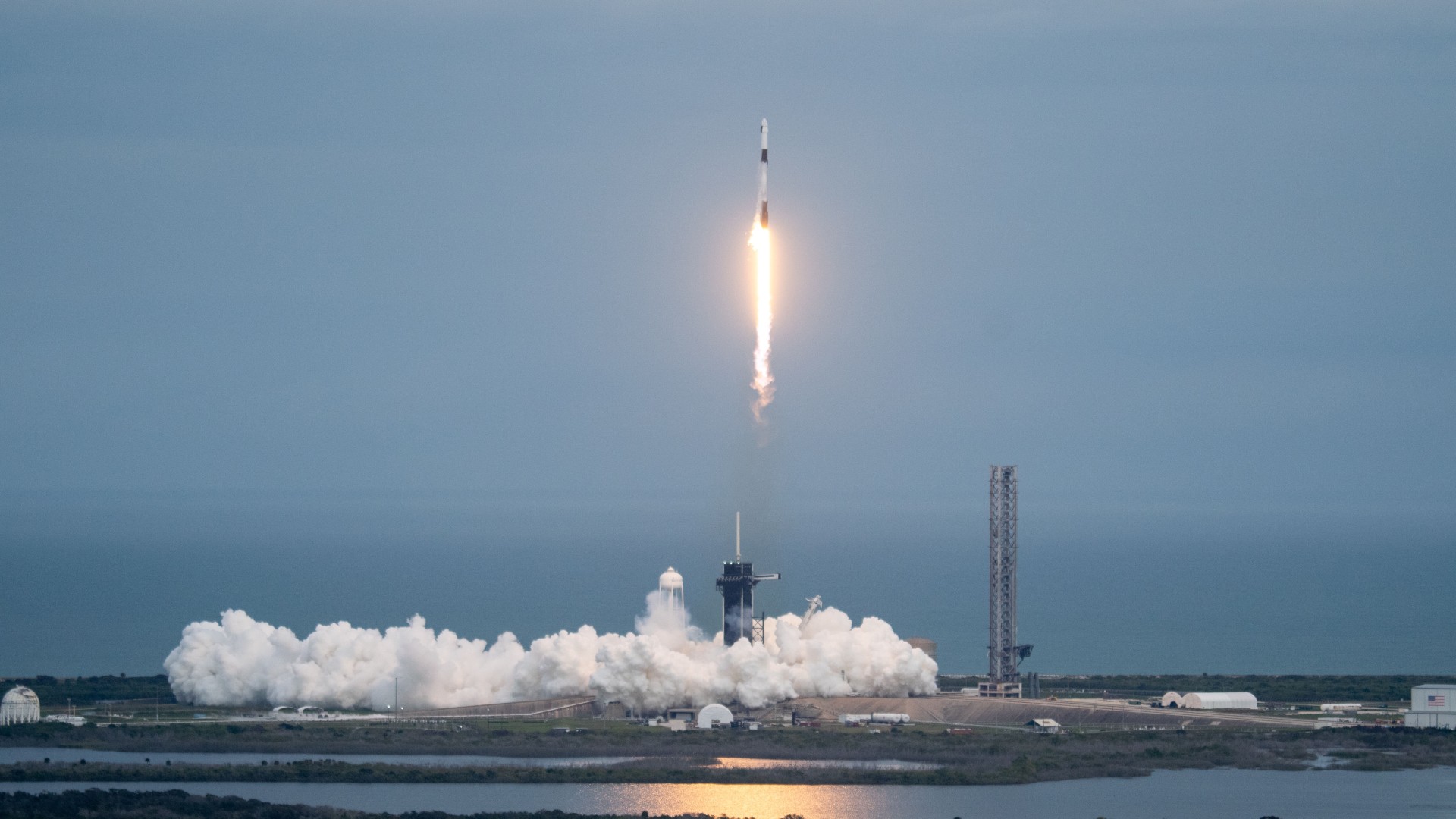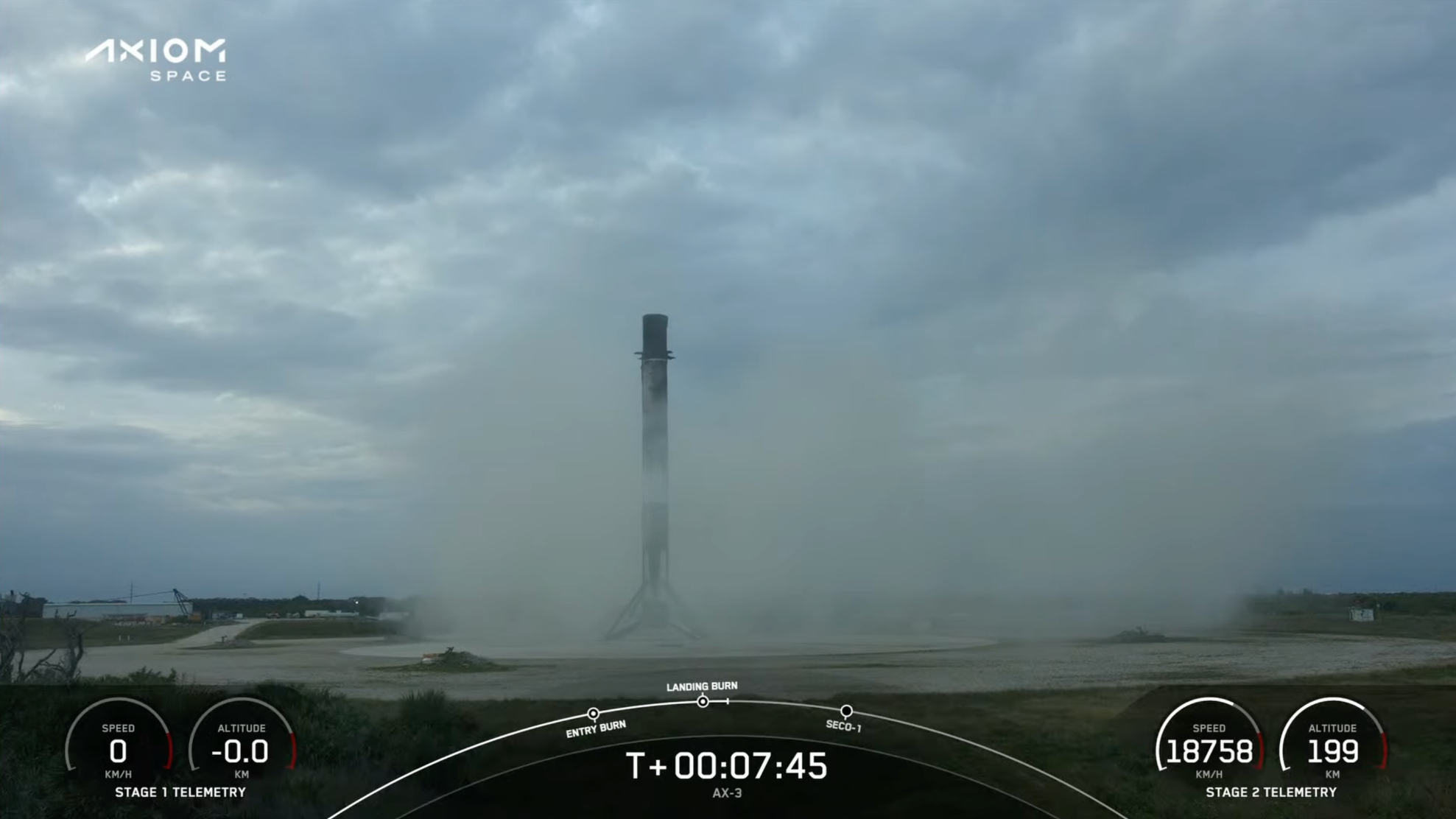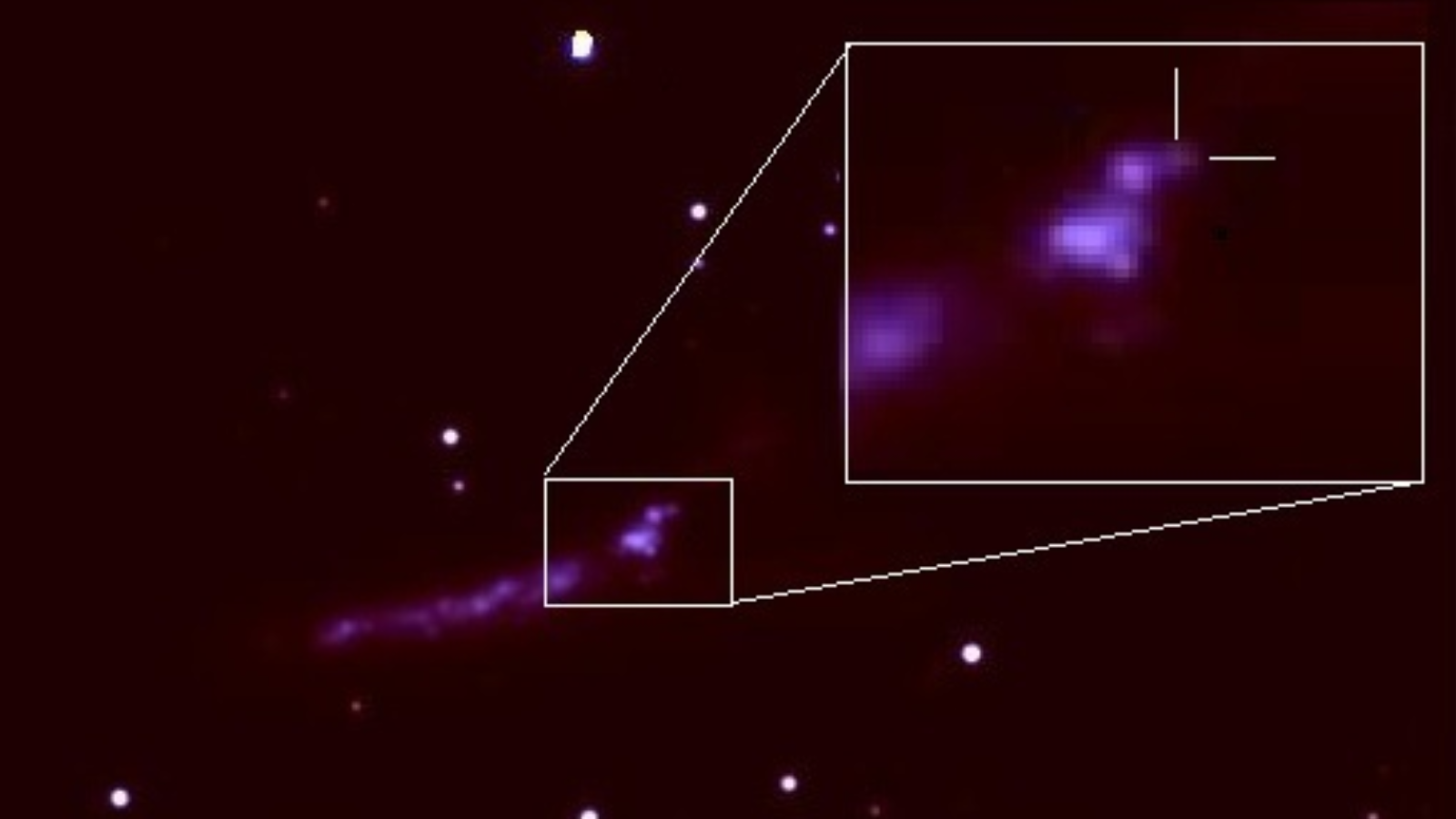SpaceX launches private Ax-3 mission to ISS, 1st Turkish astronaut on board
Ax-3 is carrying Axiom Space's first all-European crew, which includes Turkey's first astronaut.
CAPE CANAVERAL, Florida — SpaceX just launched another private astronaut mission toward the International Space Station (ISS).
A SpaceX Falcon 9 rocket lifted off from Pad 39A at NASA's Kennedy Space Center (KSC) here today (Jan. 18) at 4:49 p.m. EST (2149 GMT), sending the Crew Dragon capsule "Freedom" skyward on Ax-3, the third mission organized by Houston company Axiom Space. The launch was originally scheduled for Wednesday (Jan. 17) but was delayed a day to allow more time for prelaunch checks.
The four-person Ax-3 is led by Michael López-Alegría, a former NASA astronaut who now serves as Axiom Space's chief astronaut. He's joined by mission pilot Walter Villadei, an Italian Air Force colonel who flew to suborbital space with Virgin Galactic last summer; Turkey's first astronaut, Alper Gezeravcı; and European Space Agency (ESA) astronaut reserve member Marcus Wandt. Gezeravcı and Wandt will serve as mission specialists.
López-Alegría is a citizen of Spain as well as the U.S., so Axiom bills Ax-3 as "the first all-European commercial astronaut mission" to the ISS.
Related: Live updates from the Ax-3 private astronaut mission
The Falcon 9's successful liftoff and staging were followed by the return to Earth of the rocket's first stage. The booster touched down at SpaceX's Landing Zone-1 at Cape Canaveral Space Force Station, which is next door to KSC, a little less than eight minutes after launch as planned.
Freedom separated from the Falcon 9's second stage about 12 minutes after liftoff, beginning the capsule's roughly 36-hour orbital journey to rendezvous with the ISS.
Breaking space news, the latest updates on rocket launches, skywatching events and more!
"Walter, Alper and Marcus: Congrats, and welcome to your first flight on Dragon," SpaceX launch director Mark Soltys said to the Ax-3 crew shortly after Freedom's deployment. "Mike, on the other hand, welcome to the Dragon frequent flyer club. I imagine you'll have enough miles to qualify for platinum status after this flight."
As that note indicates, Villadei, Gezeravcı and Wandt had not flown with SpaceX before; indeed, Ax-3 is the first orbital mission for all three. López-Alegría, on the other hand, now has six spaceflights under his belt, including the Ax-1 mission to the ISS in April 2022. He is the first astronaut ever to fly on Dragon twice.
Freedom is scheduled to catch up with the space station early Saturday morning (Jan. 20), docking with the Harmony module at around 5:15 a.m. EST (1015 GMT). Hatch opening between Freedom and the ISS will occur not long after that, followed by an Ax-3 crew welcome ceremony with the station's entire complement.
The Ax-3 astronauts will spend about two weeks working as integrated residents of the orbital laboratory, conducting microgravity research and science. Experiments performed by the Ax-3 crew will include investigations into physics, human health and outer space medicine. Some of this research will help Axiom better understand and develop training programs for their astronauts on future flights.
"We are using these first missions as a way to understand how to train astronauts, train crew, and really have the operational expertise that we need as an entire company, but also to kind of fine-tune the things that we want to fly from a low-Earth-orbit economy perspective," David Zuniga, senior director of in-space solutions at Axiom, told Space.com before the Ax-2 launch in May of last year.
Barring any weather delays, like the ones that prolonged the return of Ax-1 in 2022, the Ax-3 astronauts are scheduled to depart the ISS after about two weeks, parachuting back to Earth for a splashdown off the coast of Florida.
It will be the third such return for the Freedom capsule, which also flew SpaceX's Crew-4 mission for NASA in 2022 and Ax-2 last year. Ax-3 is SpaceX's 12th astronaut flight overall.
Axiom has plans to operate its own private space station, which it will begin constructing as a part of the ISS. The company is targeting the launch of its first module in 2026, which will attach to the Harmony module's forward-facing port. Additional components, including a thermal regulation and power module, are scheduled incrementally through the end of the decade, culminating in the Axiom station's departure from the ISS and independent on-orbit operation.

Josh Dinner is the Staff Writer for Spaceflight at Space.com. He is a writer and photographer with a passion for science and space exploration, and has been working the space beat since 2016. Josh has covered the evolution of NASA's commercial spaceflight partnerships and crewed missions from the Space Coast, as well as NASA science missions and more. He also enjoys building 1:144-scale model rockets and human-flown spacecraft. Find some of Josh's launch photography on Instagram and his website, and follow him on X, where he mostly posts in haiku.


